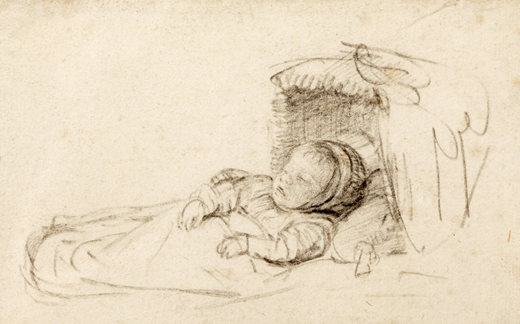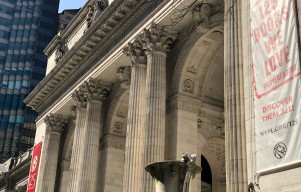
REMBRANDT HARMENSZOON VAN RIJN (1606-1669). A baby sleeping in a cradle, traditionally said to be the artist's son, Titus, black chalk on paper with no watermark visible,
Cultural Significance
The British Museum has added to its impressive collection of Rembrandt's drawings by purchasing a moving black chalk sketch titled "A Baby in a Cap Sleeping in a Cradle." This addition to the museum's collection of Rembrandt's works results from a unique arrangement - the piece has been transferred to the nation instead of an inheritance tax bill, showing the significance of this artwork.
This acquisition expands the British Museum's extensive collection of Rembrandt's works on paper and was made possible by the Arts Council Acceptance in Lieu program. More than 1,000 prints, 72 master drawings, and more than 300 student drawings are housed in the museum. In a celebration of Rembrandt's artistry and his extraordinary ability to capture the essence of human life, the public will be able to view this recently acquired drawing in addition to his deft portrayal of children in an upcoming spring exhibition at the museum.
Also Read: Mitti's Flintstone6 House, a Hidden Gem of Sustainability and Serenity in Bangalore's Sanctity Ferme
Artistic Process and Model for the Holy Family
Harmensz Rembrandt. From 1606 to 1669, Van Rijn, one of the most illustrious artists in art history, was born. Renowned for his sensitive observations of human life and innovative approach to painting and printmaking, Rembrandt's legacy endures through the timeless appeal of his creations.
The recently acquired piece, "A Baby in a Cap Sleeping in a Cradle," was meticulously drawn from life. This sketch functioned as a model for Rembrandt's portrayal of the Christ child in his signed and dated 1645 painting of the Holy Family, currently on display at the Hermitage Museum in St. Petersburg. Rembrandt's unique style, which draws inspiration from the home environment and gives biblical narratives a poignantly human perspective, is largely responsible for his ongoing popularity. According to historical chronologies, the child in the drawing is older than Rembrandt's son Titus, who was born in 1641. It is noteworthy that the drawing was initially believed to depict Rembrandt's son Titus.
The drawing in question boasts a storied provenance, having been part of private collections in Britain for over two centuries. This prolonged stay in the country is proof of the continued fascination British collectors felt with Rembrandt during the eighteenth century. The works of Sir Joshua Reynolds, another ardent Rembrandt collector, show that the artist's expressive style encouraged British collectors to pursue the artist's works with passion and had a lasting impact on modern British art.
Understanding Rembrandt's Reception in Britain
The reception of Rembrandt in Britain during his formative years is intrinsically linked to the collection's history. Sir Frederic Leighton, a Victorian painter, is among the most prominent British collectors who have owned the recently acquired drawing. As such, it is important to understand how Rembrandt was received in the United Kingdom and the larger background of British collecting and taste.
The drawing, which customarily features the artist's son, Titus, is a powerful example of familial tenderness and demonstrates Rembrandt's capacity to bring a profound human element to his work. With this acquisition, the British Museum continues its enduring mission to preserve and present the works of art that have influenced the development of art history in a meaningful way. As the public looks forward to the exhibition, the museum keeps up its role as a custodian of cultural legacy, ensuring everyone can still appreciate the magnificence of Rembrandt's artistry.
Related Article: Baroque Art & Architecture: Unraveling the Mysteries of an Epoch


















